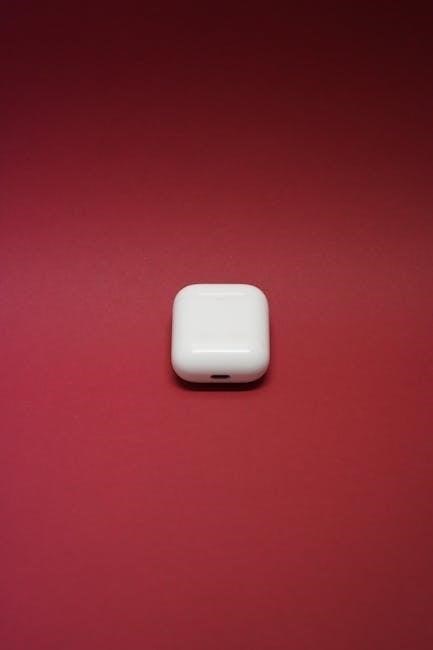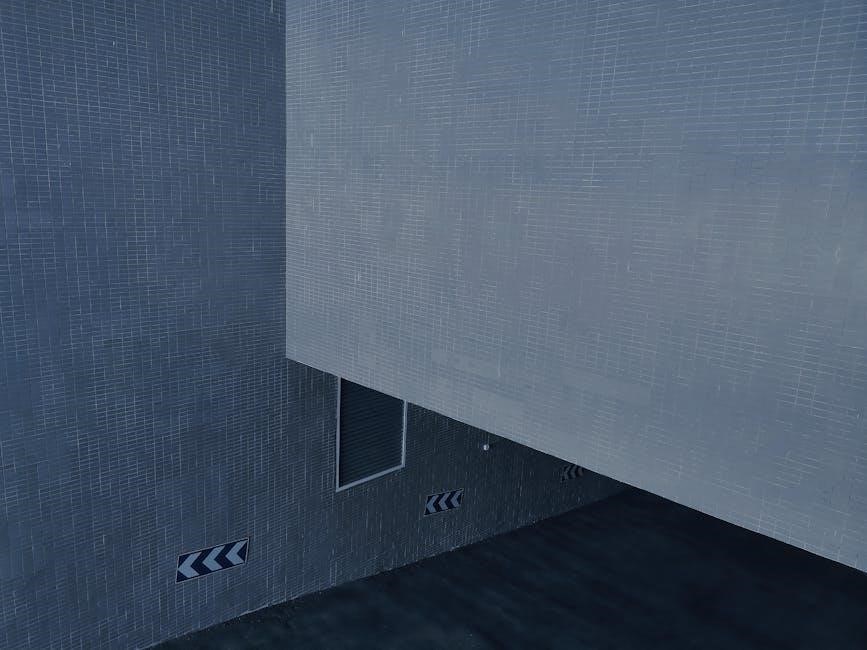Dental veneers are a transformative cosmetic solution, offering customization in shape, size, and color to enhance your smile. This guide explores how veneer shapes align with facial aesthetics, tooth structure, and personal style, providing tips for selecting the perfect fit and maintaining lasting results.
What Are Veneers?
Veneers are thin, custom-made shells crafted from materials like porcelain or composite resin. They are designed to be bonded to the front surface of teeth to enhance their appearance. Veneers are used to correct imperfections such as discoloration, gaps, misalignment, or uneven shapes. Unlike crowns, they require minimal tooth preparation and focus on aesthetic improvement. Porcelain veneers are known for their durability and natural-looking results, while composite resin veneers offer versatility and can often be shaped during the procedure. Both options provide a transformative solution for achieving a confident, radiant smile tailored to individual preferences. This guide explores how their shape plays a key role in their effectiveness and appeal.
The Importance of Shape in Veneer Aesthetics
The shape of veneers plays a pivotal role in achieving a natural, harmonious smile. Properly designed veneers complement facial features, ensuring symmetry and balance. Rounded shapes often suit heart-shaped faces, while square veneers enhance square or oval face types. The shape also influences light reflection, creating a more lifelike appearance. A well-chosen shape aligns with tooth proportions, enhancing aesthetics while maintaining functionality. Misaligned or mismatched shapes can detract from the overall look, making precision in design crucial. This guide emphasizes how shape selection, tailored to individual facial aesthetics and tooth structure, is essential for a visually stunning and confident smile. The right shape ensures veneers blend seamlessly with natural teeth, delivering optimal cosmetic results.

Types of Veneers
Veneers come in various types, including porcelain, known for durability, composite resin, offering affordability, and feather veneers, which are ultra-thin and minimally invasive. Each type caters to different needs.
Porcelain Veneers
Porcelain veneers are a popular choice for their durability and natural appearance. Made from high-quality ceramic, they are stain-resistant and long-lasting. The process involves removing a thin layer of enamel to fit the veneer seamlessly. Porcelain veneers are customized to match your tooth color and shape, ensuring a cohesive smile. They are ideal for correcting discolored, chipped, or misaligned teeth. With proper care, porcelain veneers can last for decades. Their translucent quality mimics natural enamel, making them a preferred option for achieving a lifelike aesthetic. However, they are irreversible due to enamel removal and require skilled craftsmanship for optimal results.
Composite Resin Veneers

Composite resin veneers are a versatile and cost-effective option, made from a moldable material that can be shaped and sculpted during a single dental visit. They are bonded directly to the tooth surface, requiring minimal enamel removal. This makes them a less invasive choice compared to porcelain veneers. Composite veneers are ideal for minor imperfections, such as small chips or gaps, and can be repaired if damaged. While they may not be as durable as porcelain, they offer a natural appearance and can be customized to match your tooth color and shape. Their affordability and ease of application make them a popular choice for achieving a quick smile transformation.
Feather Veneers
Feather veneers are an innovative cosmetic solution, known for their ultra-thin design and minimal enamel preparation. They are crafted to blend seamlessly with natural teeth, offering a subtle yet transformative smile enhancement. Unlike traditional veneers, feather veneers focus on preserving tooth structure while addressing imperfections like discoloration or minor misalignment. Their lightweight and natural appearance makes them ideal for patients seeking a conservative approach. With advancements in materials and techniques, feather veneers are reshaping the future of cosmetic dentistry, providing durable and aesthetically pleasing results that align with modern smile design principles. They are a popular choice for those looking for a discreet, long-lasting solution.

Factors Influencing Veneer Shape
Veneer shape is influenced by face shape, tooth structure, and symmetry, ensuring a harmonious and natural-looking smile. These factors guide the design process effectively.
Face Shape and Veneer Compatibility
Your face shape significantly influences veneer design, ensuring a balanced, natural look. Oval faces suit rounded or oval veneers, while heart-shaped faces benefit from shorter, rounded shapes. Round faces look best with square veneers to create contrast. Square faces can opt for softer, more rounded edges. Symmetry and proportion are key, as veneers should complement facial features without appearing overly dramatic. A personalized approach ensures the veneers harmonize with your unique aesthetics, enhancing your smile while maintaining a natural appearance. Consulting with a dentist helps determine the most flattering shape for your face, achieving a cohesive and attractive result.
Tooth Structure and Veneer Design
Tooth structure plays a crucial role in determining veneer design. The natural shape, alignment, and condition of your teeth guide the creation of veneers, ensuring a seamless fit and aesthetic appeal. Factors like chips, gaps, or misalignment are considered to craft veneers that enhance your smile while appearing natural. The length and proportions of your teeth are also evaluated to ensure veneers complement your facial features. Additionally, the existing tooth structure influences the amount of enamel removal required, as veneers are tailored to bond securely without compromising tooth integrity. This personalized approach ensures veneers not only improve appearance but also function in harmony with your natural teeth.
Symmetry in Veneer Placement
Symmetry is a key factor in achieving a natural, aesthetically pleasing smile with veneers. Properly aligned and proportioned veneers create balance, enhancing the overall appearance of your teeth. Dentists use precise measurements and digital imaging to ensure veneers are placed symmetrically, complementing your facial features. Symmetry also involves the alignment of the six main visible teeth, ensuring they harmonize with each other and your smile. Even slight asymmetries can be corrected to create a balanced look. Achieving symmetry not only improves the visual appeal of your smile but also boosts confidence, making it a critical aspect of veneer placement and design.

Designing Veneers with Your Dentist
Designing veneers involves collaborative planning with your dentist to customize shape, size, and color. Digital imaging aids in visualizing outcomes, ensuring veneers complement your smile and facial aesthetics;
Selecting the Right Shape and Size
Selecting the right veneer shape and size is crucial for a natural, harmonious smile. Your dentist will assess your facial features and tooth structure to recommend shapes that complement your aesthetics. Rounded veneers suit heart-shaped faces, while square shapes enhance square faces. Oval veneers are ideal for oval or rectangular faces. The goal is to create balance and symmetry, ensuring veneers align with adjacent teeth and gum lines. Digital imaging tools may be used to preview outcomes, helping you choose confidently. Proper sizing ensures comfort and functionality, making your veneers both aesthetically pleasing and durable;
Color and Texture Matching
Color and texture matching are essential for veneers to blend seamlessly with your natural teeth. Your dentist will use shade guides to select veneers that complement your tooth color, ensuring a harmonious smile. The goal is to achieve a natural appearance by matching the shade and texture of adjacent teeth. Advanced techniques, such as digital imaging, allow for precise customization. Texture is also customized to mimic the natural enamel, creating a lifelike finish. Proper color and texture alignment enhance the aesthetic results, making veneers virtually indistinguishable from real teeth. This attention to detail ensures your veneers look authentic and complement your overall facial aesthetics.
The Role of Digital Imaging in Veneer Design
Digital imaging plays a crucial role in veneer design by providing a detailed visual representation of your smile. Advanced software allows dentists to create digital models of your teeth, enabling precise customization of veneer shape, size, and color. This technology helps visualize the final result before fabrication, ensuring a flawless fit and aesthetic appeal. Digital scans capture the exact contour and alignment of your teeth, guiding the manufacturing process. Additionally, digital imaging facilitates communication between you and your dentist, allowing you to preview and approve the design. This modern approach ensures veneers align perfectly with your facial features and dental structure, delivering a natural, tailored smile.

Veneer Manufacturing Process
Veneers are crafted using high-quality materials like porcelain or composite resin. The process involves precise shaping by skilled dental labs, ensuring a natural fit and appearance, taking 2-4 weeks.
Materials Used for Veneer Production
Porcelain and composite resin are the primary materials for veneers. Porcelain veneers are renowned for their durability and natural appearance, often requiring more enamel preparation. Composite resin veneers, made from a flexible material, offer versatility in shaping and can be molded directly onto teeth during a single visit. Both materials are customized to match tooth color and shape, ensuring a seamless blend with natural teeth. Modern advancements also include Feather Veneers, a thinner option requiring minimal tooth preparation. Each material has unique benefits, catering to different dental needs and aesthetic preferences, making them suitable for various smile transformation goals.
The Role of Dental Labs in Shaping Veneers
Dental labs play a crucial role in crafting veneers, ensuring they match the desired shape, size, and color. Using impressions taken by dentists, technicians create precise models to shape veneers. Advanced tools like diamond burs and digital imaging aid in achieving accurate contours. Porcelain veneers are carefully layered for natural aesthetics, while composite resin veneers are shaped for versatility. Labs work closely with dentists to align veneers with patients’ facial features and tooth structure, ensuring symmetry and harmony. Their expertise ensures veneers are both functional and visually appealing, meeting individual smile goals and enhancing overall dental aesthetics with precision and artistry.

Overview of Veneer Shapes
Veneer shapes include rounded, square, oval, and natural options, each tailored to complement facial aesthetics and tooth structure for a balanced, harmonious smile.
Rounded Veneers
Rounded veneers are ideal for creating a soft, natural appearance, often recommended for heart-shaped faces to balance angular features. They subtly soften sharp lines and tapered teeth, enhancing femininity and warmth.
This shape is popular for those with pointed or overly sharp canines, as it blends seamlessly with surrounding teeth. While rounded veneers are versatile, they may not suit square or oval face shapes, as they can lack definition. Always consult a dentist to determine if this style aligns with your facial structure and aesthetic goals. Proper shaping ensures a harmonious smile that complements your unique features.
Square Veneers
Square veneers are characterized by their straight edges and symmetrical shape, offering a bold, modern aesthetic. They are often recommended for individuals with square or oval face shapes, as they complement angular features;
This style is ideal for those seeking a strong, defined smile, particularly if their natural teeth are rounded or tapered. However, square veneers may not suit heart-shaped faces, as they can accentuate sharp angles. While they provide a striking appearance, their shape requires precise customization to avoid a overly harsh look. Consulting a dentist ensures they align with your facial proportions for a balanced, natural result.
Oval Veneers
Oval veneers are a popular choice for their soft, natural appearance, blending seamlessly with various face shapes. They feature rounded edges and a slightly elongated shape, creating a balanced and harmonious smile.
This style is particularly flattering for individuals with round or oval faces, as it adds subtle length without appearing overly dramatic. Oval veneers are also versatile, working well for both masculine and feminine aesthetics. Their moderate shape ensures they complement most tooth structures, offering a timeless and elegant solution for enhancing dental aesthetics while maintaining a natural look.
Natural-Shape Veneers
Natural-shape veneers are crafted to mirror the appearance of real teeth, offering a subtle and understated enhancement. They are designed to blend seamlessly with the patient’s existing dental structure, ensuring a lifelike result.
This style is ideal for those seeking a conservative transformation, as it mimics the natural contours and proportions of their teeth. Natural-shape veneers are often recommended for minor imperfections, such as small chips or gaps, and are particularly effective in maintaining the original tooth shape while improving overall aesthetics. Their discreet nature makes them a preferred choice for individuals desiring a nuanced smile makeover.
Measuring and Fitting Veneers
Accurate measurements ensure a perfect fit, enhancing both aesthetics and functionality. Impressions are taken to match the shape and alignment of your teeth, creating a seamless integration for natural-looking results.
Impression Taking for Accurate Fit
Accurate impressions are crucial for creating veneers that fit seamlessly. Dentists use moldable putty or digital scans to capture the exact shape and contour of your teeth. This process ensures precise measurements, allowing for natural aesthetics and functionality. Temporary veneers are often provided during this phase, giving patients a preview of their new smile. The impression serves as a blueprint for the dental lab, guiding the fabrication of veneers that align perfectly with your tooth structure. This step is essential for achieving a comfortable, natural-looking result that enhances both the appearance and performance of your teeth.
Temporary Veneers During the Shaping Process
Temporary veneers are essential during the shaping process, allowing patients to preview their smile and test functionality. Made from composite resin, these veneers are bonded to teeth and typically last 2-4 weeks. They are crafted in a single dental visit, providing immediate aesthetic and protective benefits. Temporary veneers help patients adjust to the feel and appearance of their new smile, enabling any necessary adjustments before final placement. This step ensures satisfaction and comfort, bridging the gap between preparation and the permanent transformation. It’s a critical phase for achieving optimal results and patient confidence in their veneer treatment.

Common Mistakes to Avoid
Avoid over-shaping veneers, as it can lead to unnatural results. Mismatched color and shape with natural teeth are common errors. Improper fit and alignment should also be prevented.
Over-Shaping of Veneers
Over-shaping veneers is a common mistake that can lead to an unnatural appearance. It occurs when too much enamel is removed or the veneer’s design doesn’t complement the tooth structure. This can result in a smile that looks overly artificial or mismatched with the patient’s facial features. To avoid this, dentists must carefully plan the shape based on the patient’s tooth proportions and facial aesthetics. Temporary veneers can help patients preview the final result, allowing adjustments before the permanent placement. Proper communication between the patient and dentist is key to achieving a balanced, natural-looking smile without over-shaping.
Mismatched Color and Shape
Mismatched color and shape are common pitfalls in veneer placement. The veneers may not harmonize with the patient’s natural teeth or facial features, leading to an aesthetically unpleasing result. Color mismatch can occur if the shade chosen doesn’t align with the surrounding teeth, while shape mismatch happens when the veneers don’t complement the patient’s tooth proportions or facial aesthetics. To prevent this, dentists use digital imaging to preview the outcome and ensure the chosen color and shape blend seamlessly. Patients should also consider temporary veneers to assess the appearance before final placement, ensuring satisfaction with both color and shape.
Improper Fit and Alignment
Improper fit and alignment of veneers can lead to discomfort, premature wear, and even damage to the surrounding teeth or veneers themselves. A poor fit may cause uneven biting surfaces, affecting chewing function and overall dental health. Additionally, misaligned veneers can create aesthetic issues, such as a crooked or uneven smile. To avoid this, precise impression-taking and careful shaping are essential. Temporary veneers can help patients assess the fit and alignment before the final placement. Regular check-ups and adjustments by a skilled dentist ensure the veneers align properly with the natural teeth, maintaining both functionality and aesthetics.

Veneer Aftercare and Maintenance
Proper care ensures veneers last longer. Avoid hard foods, use soft toothbrushes, and maintain regular dental check-ups. Good oral hygiene and diet choices preserve their appearance and functionality.
Tips for Longevity of Veneers
To ensure your veneers last, avoid chewing hard foods like ice or nuts, as they can chip the material. Use a soft-bristled toothbrush and fluoride toothpaste to clean gently. Regular dental check-ups help maintain their condition and address any issues early. Avoid habits like biting nails or using teeth to open items, as this can damage veneers. Wearing a mouthguard during sports protects them from accidental impacts. Proper oral hygiene, including flossing, keeps gums healthy and prevents veneer failure. By following these tips, you can preserve the appearance and functionality of your veneers for many years.
Importance of Regular Dental Check-Ups
Regular dental check-ups are crucial for maintaining the longevity and health of your veneers. During these visits, your dentist can inspect the condition of the veneers, ensuring they remain securely bonded and free from damage. Early detection of minor issues, such as chips or gaps, allows for prompt repairs, preventing more extensive problems. Additionally, professional cleanings help remove plaque and stains, preserving the veneers’ appearance. Regular care also supports overall gum health, which is essential for the stability of your veneers. Consistent check-ups ensure your smile stays vibrant and your investment in veneers is protected for years to come.

Case Studies and Examples
Real-life examples demonstrate how different veneer shapes enhance smiles. For instance, rounded veneers complement heart-shaped faces, while square veneers suit square faces, illustrating the impact of shape on aesthetics.
How Different Veneer Shapes Suit Various Face Types
Different face shapes benefit from specific veneer styles. Rounded veneers complement heart-shaped faces by softening angles, while square veneers enhance square faces with balanced proportions. Oval faces, considered ideal, can accommodate various shapes. Natural-shaped veneers blend seamlessly with any facial structure, ensuring a harmonious smile. The interplay between face shape and veneer design is crucial for achieving aesthetic harmony, making personalized selection essential for optimal results.